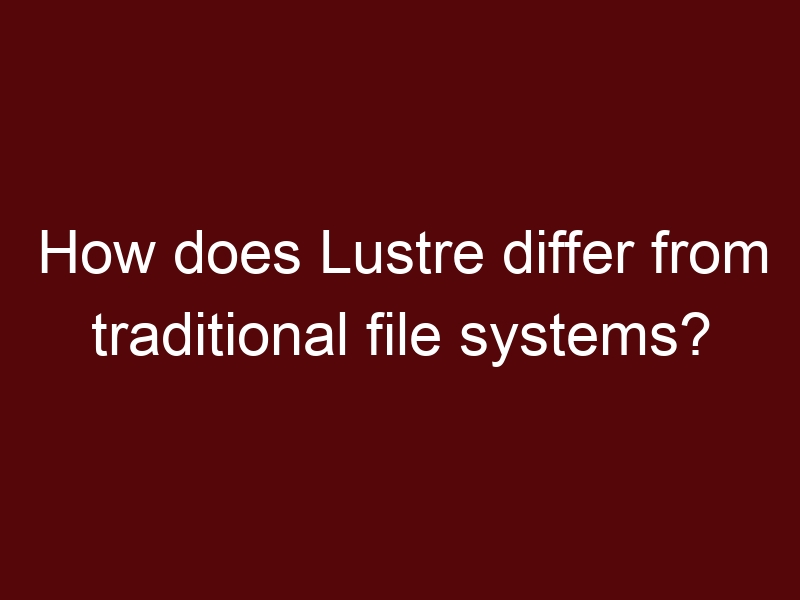Lustre differs from traditional file systems like ext4 (used in Linux) and NTFS (used in Windows) in several key ways, primarily due to its design and focus on meeting the requirements of high-performance computing (HPC) and large-scale storage environments. Here are some of the main differences:
- Parallel Architecture: Lustre is designed as a parallel distributed file system, meaning it can scale horizontally across multiple servers and storage targets. It allows multiple clients to access data simultaneously, which is essential for HPC workloads that involve massive data processing and many concurrent I/O operations. Traditional file systems like ext4 and NTFS are not optimized for parallel access and are generally used in single-server environments.
- Striping: Lustre uses striping to distribute data across multiple storage targets (Object Storage Targets or OSTs) in parallel. This improves I/O performance, as each storage target contributes its bandwidth to the overall read/write operations. Traditional file systems like ext4 and NTFS do not inherently support striping, and data is typically stored on a single disk or partition.
- Distributed Metadata: Lustre employs distributed metadata architecture, where metadata (information about file attributes, permissions, etc.) is spread across multiple Metadata Servers (MDSs). This eliminates a potential bottleneck that can occur with centralized metadata management in traditional file systems. Ext4 and NTFS typically use a single metadata server or a small set of servers.
- Performance Focus: Lustre is specifically optimized for high-performance computing workloads, where data access and I/O performance are critical. It is built to handle large files and high-throughput applications efficiently. Traditional file systems like ext4 and NTFS, while reliable and stable, are not primarily designed for such high-performance scenarios.
- High Scalability: Lustre is designed to scale to massive storage capacities and high numbers of clients. It can handle petabytes of data and thousands of clients in a Lustre file system. In contrast, traditional file systems may struggle to handle such large-scale deployments effectively.
- Data Striping and Placement: Lustre allows administrators to control data striping and placement on OSTs, which can be beneficial for optimizing I/O performance for specific workloads. In traditional file systems, data placement is usually managed by the file system itself without much control from the user.
- File System Journaling: Lustre does not have built-in journaling like ext4 and NTFS. Instead, it relies on other mechanisms to ensure data consistency and integrity in the event of system failures. Journaling is more commonly used in traditional file systems to minimize data corruption after crashes.
In summary, Lustre is a specialized file system designed for HPC and large-scale storage applications, emphasizing parallelism, scalability, and performance. Traditional file systems like ext4 and NTFS are more general-purpose and better suited for typical desktop and server environments where performance demands are lower, and the emphasis is on ease of use and data reliability.





